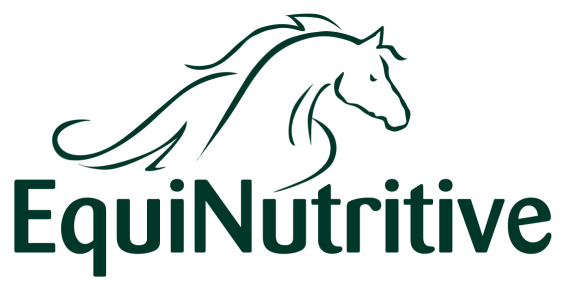What is Sugar?
Sugar breaks down and converts into glucose, which is then absorbed into the bloodstream. Glucose is an essential energy source for horses, fuelling their muscles, brain, and overall bodily functions. However, like anything in a balanced diet, too much of it can be harmful. Excess glucose can lead to a variety of metabolic and digestive issues, making it crucial for horse owners to carefully manage their horse’s sugar intake.
Sources of Sugar
Sugar is naturally present in many feedstuffs, but some ingredients contain significantly higher amounts than others. Understanding these sources can help you make informed feeding choices:
- Spring Grass – Spring grass has naturally high levels due to increased sunlight and warmer temperatures that boost photosynthesis. This process generates glucose, which fuels plant growth. While fresh grass is a valuable forage source, its high sugar content can pose risks, particularly for horses prone to laminitis or metabolic disorders.
- Cereals & Grains – Ingredients such as maize, barley, and wheat are rich in carbohydrates, which break down into glucose. Whole oats are slightly less problematic because their fibrous outer shell slows down carbohydrate digestion. However, processed grains like naked oats, which lack this outer layer, are more rapidly absorbed and can spike blood sugar levels quickly.
- Molasses – A byproduct of the sugar industry, its sticky texture and sweet taste make it a common additive and binder in feeds, chaffs, licks and treats. Where possible, opt for molasses-free options to keep sugar levels in check. If your horse is a picky eater there are plenty of sugar free alternatives such as peppermint and garlic that can be added to feeds to improve palatability.
Effects of Too Much Sugar on Horses
Horses are not designed to digest large amounts of sugar all at once. If they consume excessive sugar, the small intestine becomes overwhelmed, and undigested sugars pass into the hindgut. This can lead to several health concerns, including:
- Digestive upset – Undigested sugars in the hindgut can cause a build-up of lactic acid which can alter the pH of the hind gut. It can also compromise the microbiome which is responsible for the digestion of fibre (the main component of a horse’s diet) and linked to many areas of health. Any imbalances here can lead to a range of knock-on effects.
- Laminitis – High sugar intake can cause insulin spikes, which may trigger a flare up of laminitis. This painful and potentially debilitating hoof condition is particularly common in native breeds such as Shetlands, Connemaras, and Welsh ponies, who are naturally more insulin-sensitive.
- Gastric Ulcers – Diets high in sugar and low in forage can contribute to gastric ulcers, these are especially common in racehorses and performance horses who are normally fed high concentrate diets. Since chewing forage generates saliva that buffers stomach acid, feeding grain-heavy meals without sufficient forage can increase the risk of ulceration.
- Insulin Resistance & Equine Metabolic Syndrome (EMS) – Regular consumption of high-sugar feeds can lead to insulin resistance, a condition where the horse’s body becomes less responsive to insulin. This is a key factor in the development of Equine Metabolic Syndrome, which makes weight management and overall health more challenging.
- Behavioural Changes – Ever noticed your horse getting excitable or spooky after eating certain feeds? High-sugar diets provide a rapid energy release, which can lead to increased spooky, reactive and anxious behaviours.
How to reduce sugar consumption in your horse’s diet
If you’re concerned about your horse’s sugar intake, there are several practical steps you can take to reduce it while maintaining a nutritionally balanced diet:
- Soak Hay – Soaking hay before feeding can help leach out excess sugars, making it a safer option for horses requiring a controlled diet. Haylage should not be soaked, as the fermentation process already lowers its sugar content and further soaking can cause it to spoil quickly.
- Choose Low-Sugar Feeds – Many concentrate feeds are cereal-based and naturally high in sugar. Instead of relying on high-grain feeds, opt for fibre-based alternatives like beet pulp or legume chaffs. For horses needing extra calories, healthy fats such as linseed or coconut oil provide a slow-release, non-sugar-based energy source.
- Manage Pasture Access – Spring grass can be very high in sugar and should always be introduced to the diet gradually. Implementing strategies such as strip grazing and turning horses out on pasture during times when sugar levels are lower (e.g., early morning) can help mitigate risks.
- Read Feed Labels Carefully – Always check the sugar and starch content on feed labels. Many commercial feeds offer low-NSC formulations designed specifically for horses prone to metabolic issues.
Final Thoughts
Sugar is an essential part of a horse’s diet, but moderation is key. By understanding the sources of sugar and its effects on your horse’s health, you can make more informed choices to support their well-being. Whether managing a competition horse or a native pony, keeping sugar intake in check can go a long way in promoting a healthier body and a happier state of mind.
Claim Your Free Nutritional Advice Call
If you’re feeling overwhelmed with managing sugar in your horse’s diet our team of equine nutrition experts are always on hand to help you navigate any dietary concerns. Email us at enquiries@equinutritive.com and we can arrange a free nutritional advice call to review your horse’s diet.

